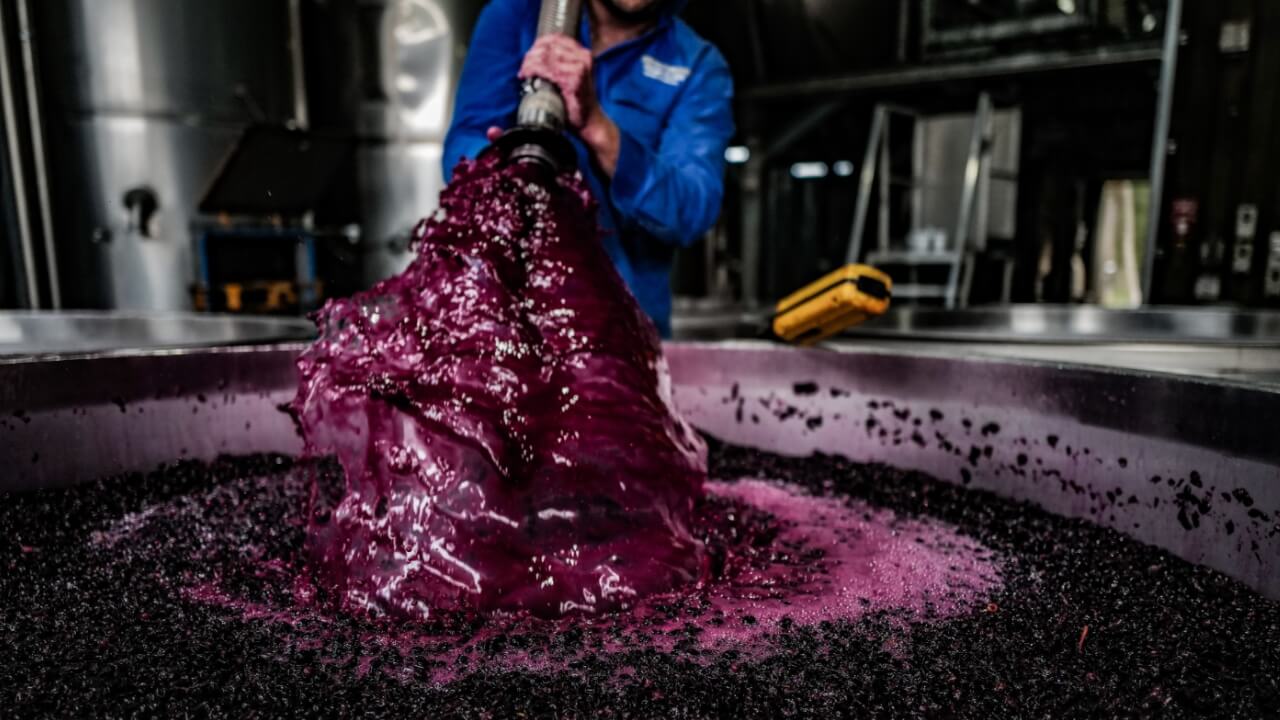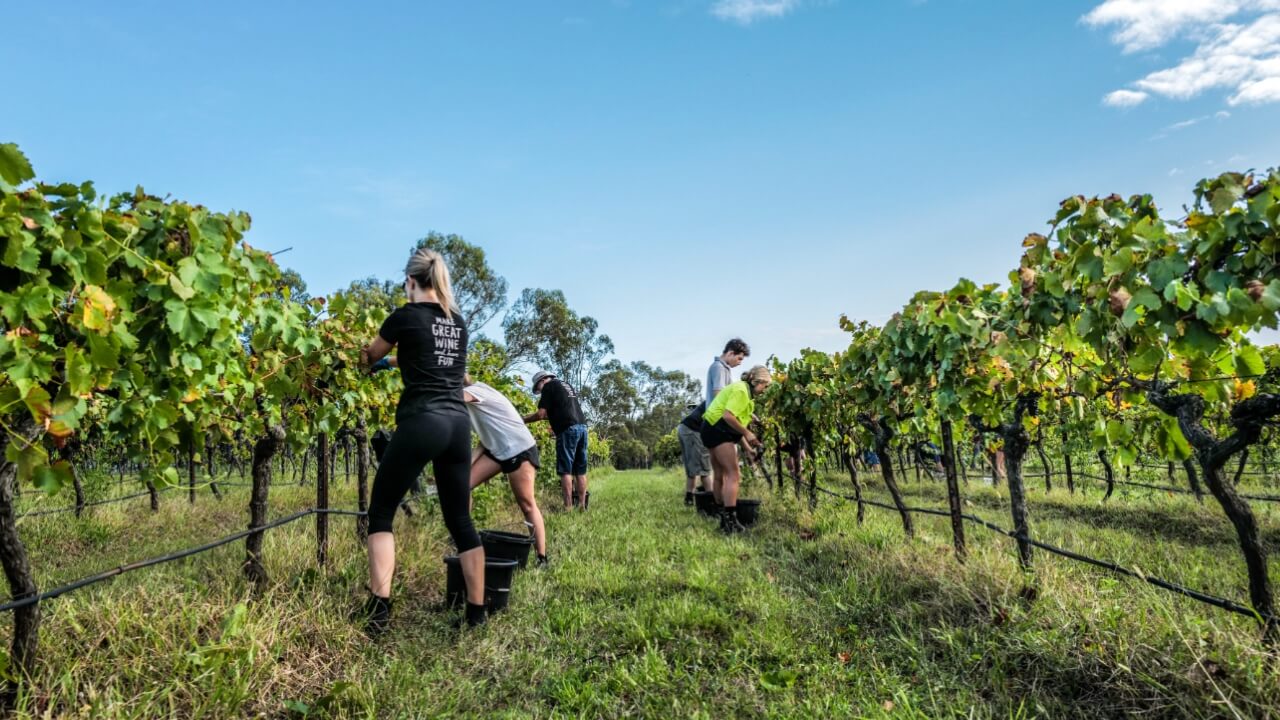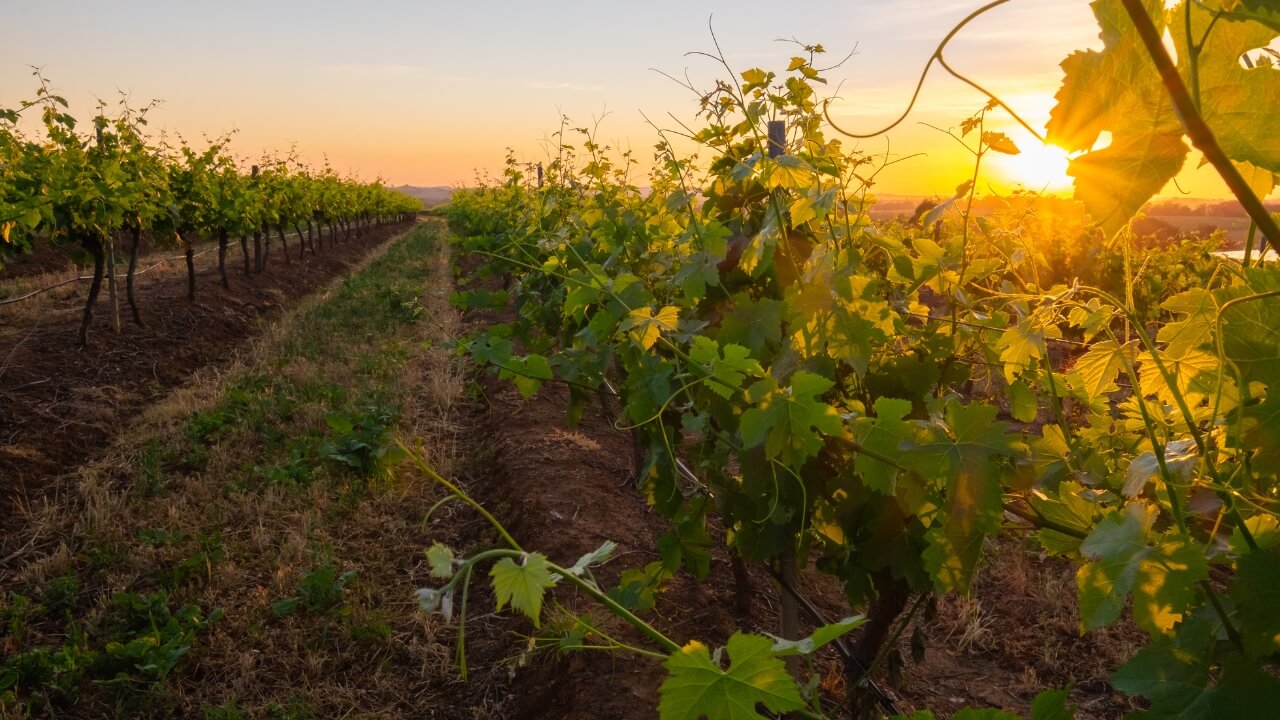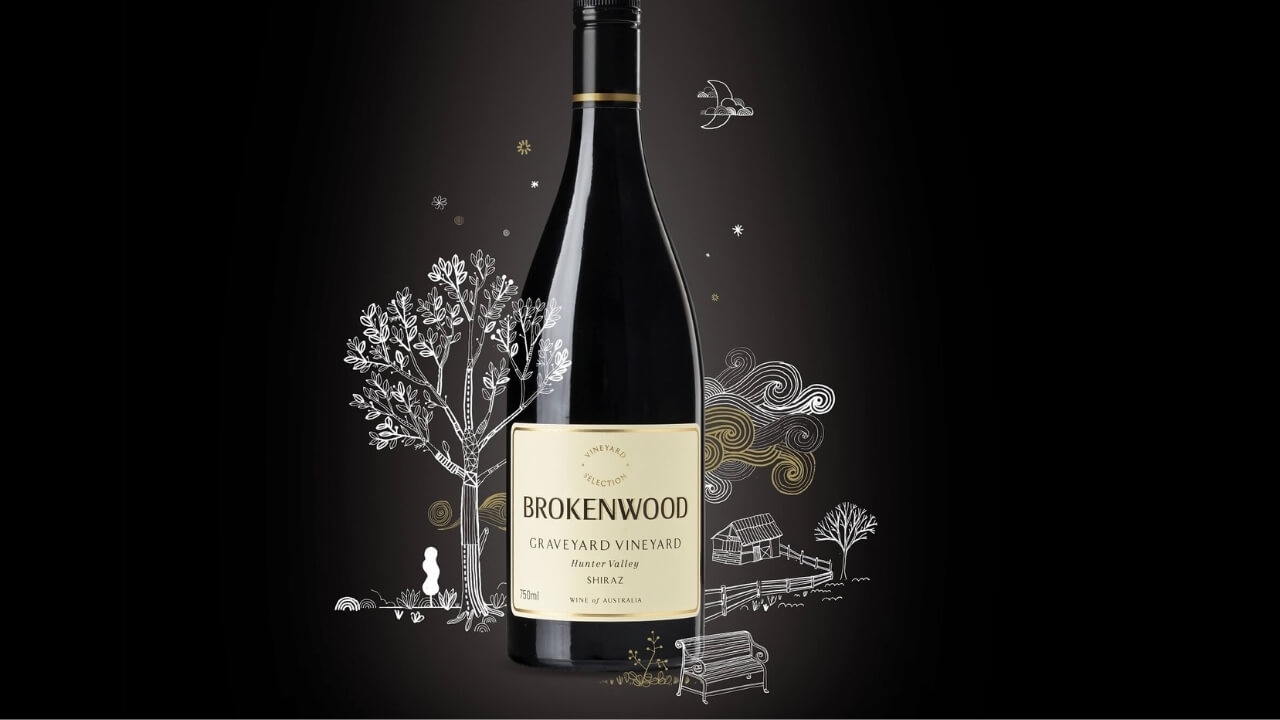10 Facts About The History of Red Wine

There are few beverages as esteemed and beloved as the crimson delicacy of red wine. Its legacy, spanning thousands of years, is a captivating narrative of discovery, innovation, and the pursuit of perfection. The history of red wine is as intriguing and rich as its palate.
In this exploration of the history of wine, we'll uncover intriguing facts that illuminate the origins and evolution of red wine, and its special place in our hearts, with a focus on Brokenwood Wines and the illustrious Hunter Valley. Pour a glass of Shiraz, prepare a cheese board, and let's dive in.
1. Origins Lost in the Sands of Time
How long has wine been around? The roots of red wine stretch deep into the annals of antiquity, tracing a heritage that spans over seven millennia. To unravel this enigmatic origin story, we journey back to the cradles of ancient civilisation: Mesopotamia and the rugged slopes of the Caucasus Mountains, located in what we now recognise as modern-day Georgia.
In Mesopotamia, the fabled land between the Tigris and Euphrates Rivers, early winemaking practices emerged as a fundamental aspect of daily life. It's here, within the fertile crescent of ancient Sumeria, that the world's first vineyards thrived. The Sumerians, a people celebrated for their inventiveness, pressed crushed grapes into clay pots, beginning a transformational process that would yield the world's oldest known fermented grape juice. This was a humble beginning, an experiment in the interplay of soil, sunlight, and patience.
Meanwhile, nestled within the rugged beauty of the Caucasus Mountains, the people of Georgia embarked on a parallel winemaking journey. In Georgia's fertile valleys, winemakers cultivated their own grape varieties, fermented the fruit in large, egg-shaped clay vessels called "qvevri," and buried them in the earth. These subterranean sanctuaries provided the perfect conditions for the grapes' transformation into wine. Today, these traditional methods, recognised by UNESCO as an Intangible Cultural Heritage, continue to shape Georgia's vibrant winemaking culture.
2. Red Wine Wasn't Always Red
Believe it or not, ancient red wines weren't exactly the deep red or purple shades we enjoy today. Due to primitive winemaking techniques, red wine was closer in colour to modern-day white wines. It wasn't until later innovations and prolonged maceration with grape skins that red wines gained their iconic hue.
The enchanting evolution of red wine colour can be attributed to a crucial element in winemaking: the grape's skin. In its natural state, the pulp of most wine grapes is relatively colourless, lending itself to the lighter shades of wine. In the nascent days of winemaking, the practice involved crushing grapes and allowing them to ferment with minimal contact with their skins. This method produced wines with hues reminiscent of pale amber, gold, or straw—a far cry from the rich, crimson depths we now associate with red wine.
The pivotal moment in the transformation of red wine's colour can be traced to a groundbreaking revelation in winemaking: the realisation that extended contact between the grape juice and its skins could produce a more vibrant and robust hue. This process, known as maceration, involves leaving the grape skins in contact with the juice during fermentation. Over time, the phenolic compounds within the grape skins seep into the wine, infusing it with the tannins, pigments, and aromas that define red wines.
As time marched forward, ancient vintners discovered the art of maceration, and gradually, the once-pale wines evolved into the deep, velvety reds we savour today.

3. A Vine's Patience: 7 Years to a Bottle
In the world of winemaking, the old adage "patience is a virtue" takes on an entirely new dimension. Crafting that cherished bottle of red wine from vine to glass involves a remarkable journey of nurturing and waiting, as the very vines that bear the fruit demand time, care, and a deep connection with the land.
- It all begins with the planting of the vine. A tiny vine, barely a few feet tall, represents the promise of future vintages. From this moment, the vine embarks on a slow, deliberate quest for maturity, a journey that can span an astonishing seven years.
- During these years, the vine undergoes a profound transformation. It grows deeper roots, anchoring itself firmly in the soil, while its branches extend towards the heavens, seeking sunlight and life. As the vine matures, it takes on the character of the terroir—the unique combination of soil, climate, and terrain that imparts distinctive flavours to the grapes.
- But it's not until the fifth year that the vine typically reaches a stage where it can produce its first, modest crop of grapes. Even then, the yield is far from bountiful. It might take several vines to yield enough fruit for a single bottle of wine.
- As the vine continues to age, its output gradually increases, and by the seventh year, it's finally capable of providing a more substantial harvest. But the story doesn't end there. Winemakers must then orchestrate the harvest with precision, selecting the grapes at just the right moment to capture the peak of flavour, acidity, and sugar levels.
This seven-year passage from the planting of the vine to the uncorking of a bottle is a profound testament to the patience and dedication of winemakers. It's a reminder that every glass of red wine is not just a drink but a piece of art—a culmination of years of anticipation, hard work, and nature's craftsmanship.
4. The Pinnacle of Prestige: Domaine de la Romanée-Conti
One of the most notable chapters in the history of wine is the story of the incredible Domaine de la Romanée-Conti bottle. In 1945, a mere 600 bottles of this renowned French wine were crafted. This also marked the final year of grape harvesting from the winery's older vines before new ones were planted in their stead.
Fondly known as DRC, Domaine de la Romanée-Conti is among Burgundy, France's most legendary vineyards, often fetching steep prices at auctions. However, in 2018, a 1945 Domaine de la Romanée-Conti bottle from a private collection, initially estimated at $32,000, shattered expectations by selling at Sotheby's for a staggering $558,000—more than 17 times the anticipated value. This marks the renowned wine as one of the most expensive wines in history, with the highest sale price ever recorded.
The record-breaking auction result had such a significant impact that it influenced the subsequent sale of a bottle from the same vintage and wine, which sold for $496,000 shortly thereafter. Safe to say, we're itching to get our hands on one of these incredible bottles!
5. Red Wine is Good For Your Health
Beyond its rich history and exceptional taste, red wine has garnered attention for potential health benefits linked to moderate consumption:
- Cardiovascular Health: Resveratrol, an antioxidant in red wine, may promote heart health by protecting blood vessels, reducing "bad" cholesterol, and enhancing heart function.
- Longevity: The "French Paradox" hints at red wine's role in promoting longevity and overall health, though more research is needed.
- Antioxidants Galore: Red wine is packed with antioxidants that combat harmful free radicals, potentially reducing oxidative stress and inflammation.
- Blood Sugar Control: Moderate red wine consumption may improve insulin sensitivity, benefiting those with or at risk of type 2 diabetes.
- Cognitive Health: Resveratrol may protect nerve cells and support brain health, although further research is required.
- A Note on Moderation: While red wine offers potential health perks, remember that excessive alcohol consumption can harm your health. Enjoy in moderation and adhere to recommended guidelines.
6. The Mystery of the Screwcaps
While corks have traditionally sealed wine bottles for centuries, the wine world has seen a shift in recent years. One fascinating fact about red wine is the increasing use of screwcaps as an alternative to corks. These caps have gained popularity due to their effectiveness in preserving wine quality. Unlike corks, which can sometimes lead to "cork taint" and spoil the wine, screwcaps offer an airtight seal, ensuring your wine tastes as intended.
Winemakers and enthusiasts continue to debate the merits of corks versus screwcaps, making it a fascinating topic for both connoisseurs and newcomers to the world of red wine. Whether you prefer the classic pop of a cork or the modern twist of a screwcap, both methods aim to preserve the delightful flavours locked within each bottle of red wine.
7. Red Wine Finds its Way to Australia
The history of red wine in Australia is a tale as old as the nation itself, dating back to the late 1700s when European settlers first set foot on its shores. Among these settlers were individuals who recognised the potential for grape cultivation and winemaking in this vast and fertile land.
One name that stands out prominently in the history of Australian wine is James Busby. Often hailed as the "Father of Australian Wine," Busby's contribution to the industry is immeasurable. In the 1830s, he embarked on a monumental journey to Europe, collecting a treasure trove of vine cuttings from some of the world's most renowned wine regions. These cuttings, carefully packed and transported across the seas, found their new home in the fertile soils of our own Hunter Valley home.

8. The Unique Terroir of the Hunter Valley
If you've visited our Cellar Door before, or one of the surrounding wineries in our Pokolbin home, you'll know that the Hunter Valley is an Australian gem in the winemaking industry. One of the defining features of the Hunter Valley is its distinctive terroir, which is part of why our talented winemakers love working in this region so much. The soil, climate, and topography of the Hunter are simply magical, producing excellent vines and delicious wine.
The region's warm, sun-drenched days and cool, crisp nights create the ideal climate for grape cultivation. These dramatic temperature variations allow grapes to ripen slowly, developing complex flavours while retaining the acidity crucial for balanced wines.
But it's not just the climate that makes the Hunter Valley special. The soil composition here is a patchwork of ancient volcanic basalt, rich alluvial plains, and well-drained slopes. This diverse soil profile provides our winemakers with a tapestry of flavours to work with, resulting in wines that are as diverse as the land itself.
9. Brokenwood's Red Wine Odyssey
In the heart of the Hunter Valley, where the sun-kissed vineyards and fertile soils converge, our beloved winery has etched its name into the annals of Australian red wine history. Established in 1970, Brokenwood Wines is not just a winery; it's a testament to the enduring passion for crafting exceptional red wines that capture the essence of the Hunter Valley.
At Brokenwood, the journey to winemaking excellence begins in our vineyards, where meticulous care is taken to cultivate the finest grape varietals. Shiraz, in particular, holds a special place in our hearts and vineyards, along with the classic Hunter Valley Semillons, of course. Our portfolio of red wines showcases a diverse range of expressions, each a harmonious symphony of flavours and aromas. Whether it's the robust intensity of a Hunter Valley Shiraz or the elegance of a Cabernet Sauvignon, our red wines consistently deliver a sensory journey that captivates the palate.
But it's not just about what's inside the bottle; it's the story behind it, and the history of wine that seeps into every sip. Our commitment to terroir is unwavering, and our rich family-oriented history seeps into every new wine we craft. Our esteemed winemakers understand that great wine is an art form shaped by the land, the climate, and our amazing people. This dedication to preserving the unique character of the Hunter Valley is what sets Brokenwood apart.
With every sip of a Brokenwood red, you're tasting a piece of Australian winemaking history. It's a history that marries tradition with innovation, resulting in wines that pay homage to the past while embracing the future. From the moment the first vine was planted, Brokenwood embarked on a mission to create wines that would stand the test of time, and today, they continue to do just that.

10. The Graveyard Shiraz Legacy
We couldn’t write an article about the history of wine without highlighting the legacy that is our flagship Graveyard Vineyard Shiraz. Its story begins in 1983 when the first vintage was crafted from our flagship Graveyard Vineyard, and since then, it has consistently demonstrated the region's unique and captivating character. The name itself, "The Graveyard," harks back to the original intent for this piece of land, destined to be a resting place. However, this fate was never fulfilled, and instead, it became the cradle of some of Australia's most renowned Shiraz.
Pouring a glass of Graveyard Shiraz, you'll be greeted by a rich and inviting bouquet. The aromas of dark cherries, plums, and subtle hints of spice are like an olfactory journey through the Hunter Valley itself. On the palate, the wine unveils layers of complexity, with flavours of red spice and bramble fruit that dance harmoniously.
One of the remarkable traits of the Graveyard Shiraz is its ageing potential. Much like the land it originates from, this wine gets better with time. As it matures in the bottle, it develops greater depth, more nuanced flavours, and a remarkable finesse that only comes with age. It's a wine that invites patience, rewarding those who choose to let it rest in their cellars.
The most recent 2021 Graveyard Vineyard Shiraz earned an impressive 98 points in the 2024 Halliday Wine Companion, an accomplishment that continues to herald this flagship wine on the world stage.
The Future of Red Wine
The history of red wine truly is a tapestry woven from the threads of time, tradition, and terroir. From its humble beginnings in ancient civilisations to its contemporary status as a global symbol of refinement, red wine's journey is a testament to the enduring allure of this beloved elixir.
As we raise our glasses of red, we're not just tasting the present, but we're also toasting to the future. With each new vintage, we continue to craft red wines that honour tradition while pushing the boundaries of quality and innovation in the heart of the Hunter.
Feeling the need to indulge in your favourite red wines? Experience the best of the Hunter Valley with a wine tasting experience at our Cellar Door. Indulge in a journey of the senses and immerse yourself in the rich history of Brokenwood Wines.